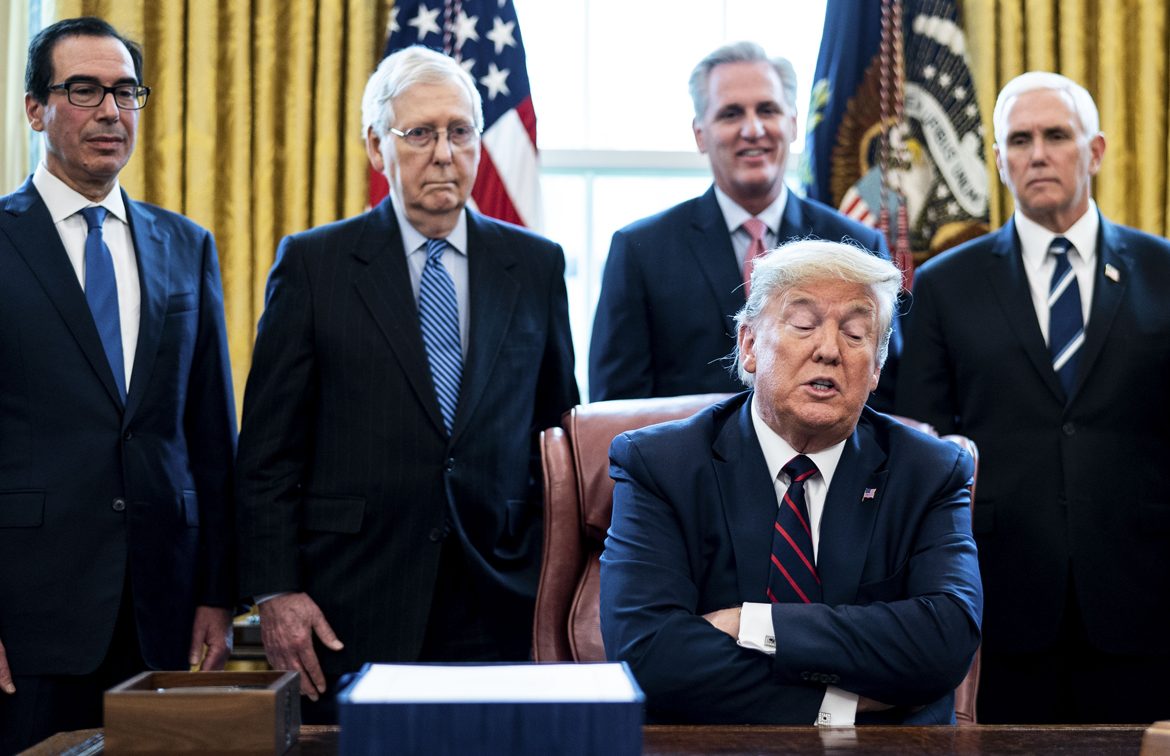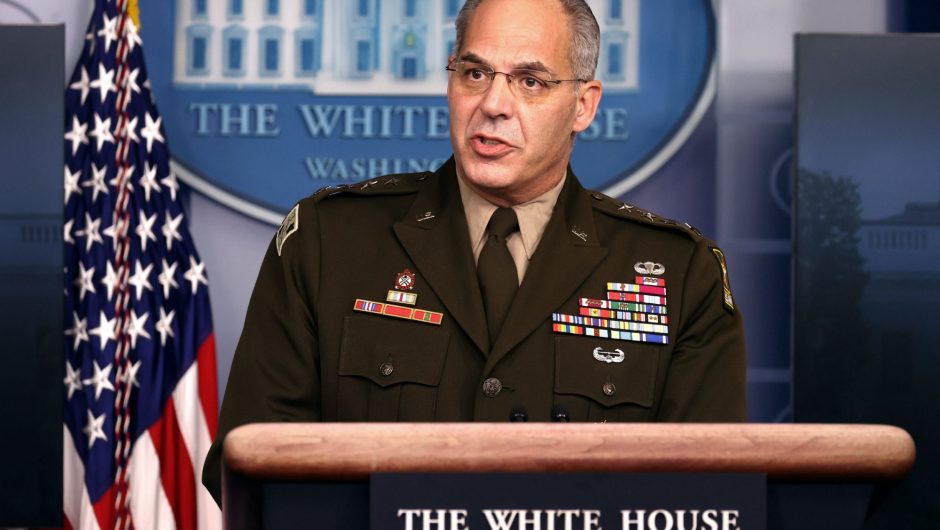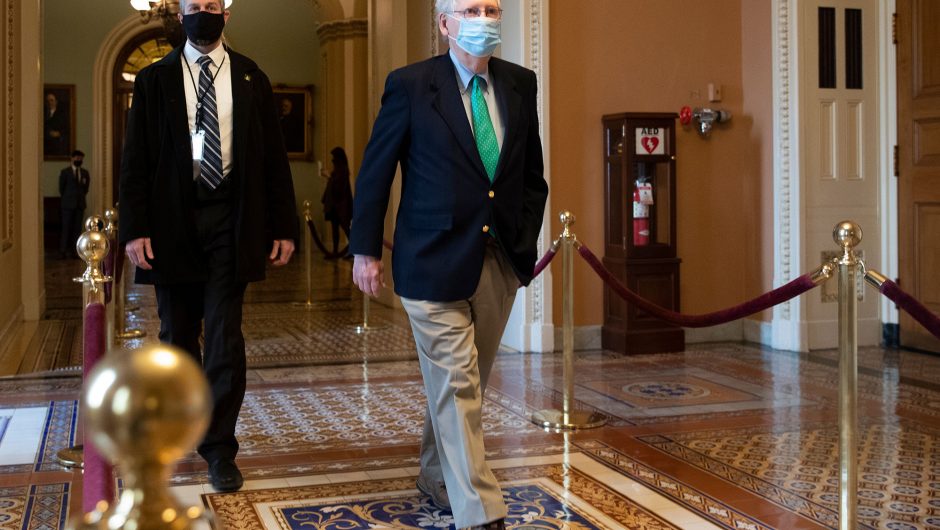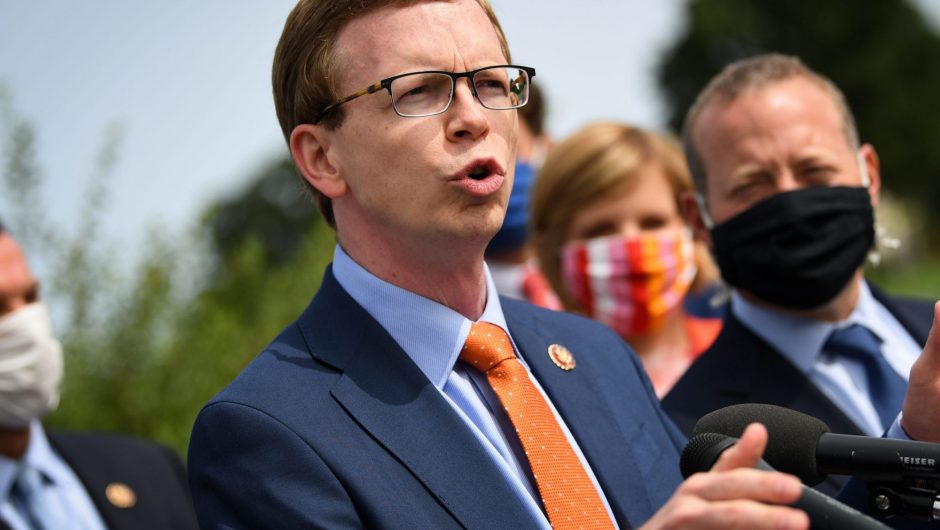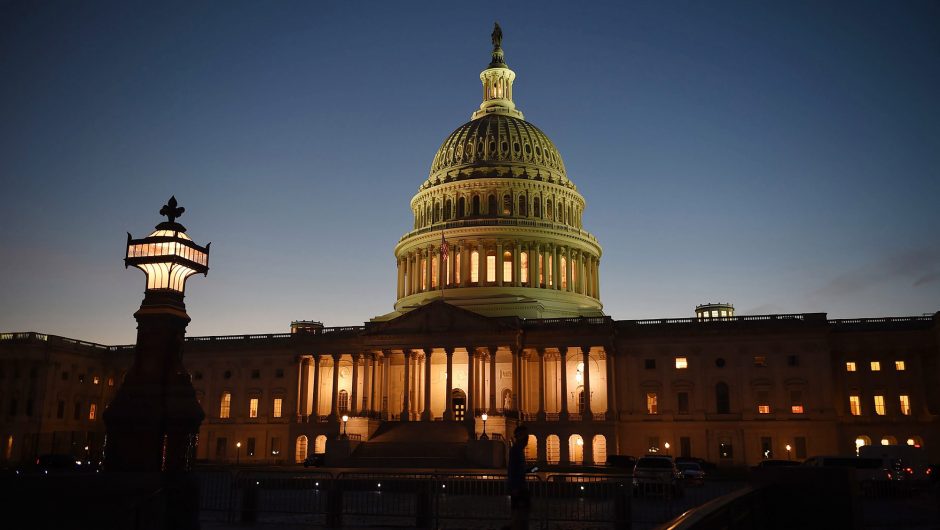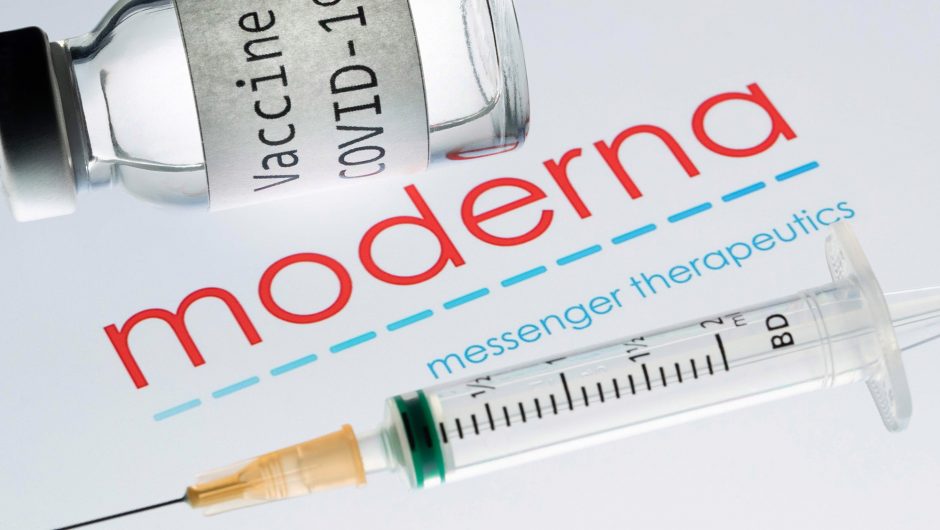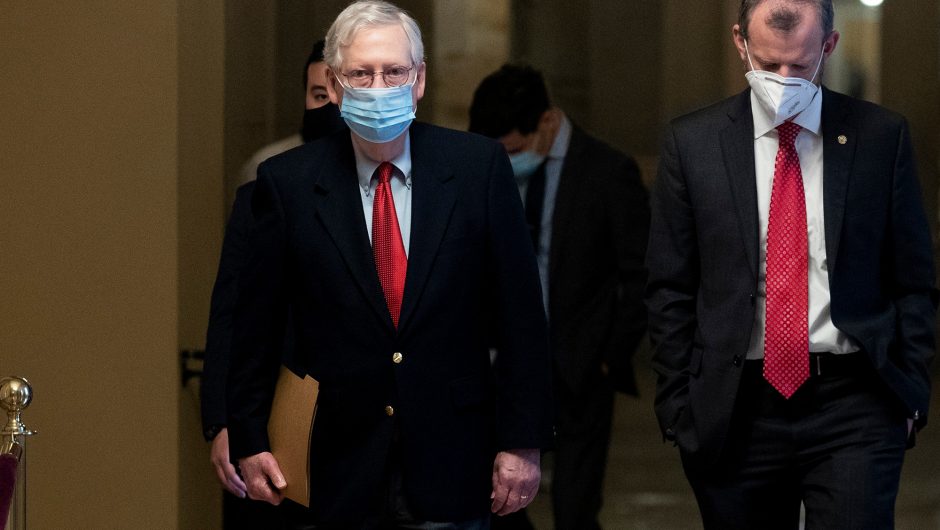The Japanese government gives subsidies to smaller companies that allow them to pay employees idled by the COVID-19 pandemic up to 100 percent of their normal wages. In the Netherlands, that number is 90 percent. In Germany, it’s 87 percent. In France, it’s 84 percent. In Italy and the United Kingdom, it’s 80 percent. In Canada, it’s 75 percent.
In America, it’s 0 percent.
The chasm between these stats tells a larger tale. While the rest of the world’s developed countries seem determined to keep shielding their citizens from the harshest economic side effects of COVID-19, President Trump and Congress have dawdled, failing so far to agree on further assistance for Americans who are now suffering more than ever.
Washington’s delayed reaction has already complicated the country’s coronavirus response in state after state and sector after sector. The longer it continues — and the stingier any eventual stimulus is — the more devastating the consequences could be.
“The risk of overdoing it is less than the risk of underdoing it,” Federal Reserve Chair Jerome Powell said Tuesday. “People are always worried about doing too much, and you look back in hindsight and say, ‘Well, we didn’t do too much. We might’ve done a little more and a little sooner.’”
President Trump before signing the CARES Act at the White House on March 27. (Erin Schaff/the New York Times/Bloomberg via Getty Images)
When the virus first struck the U.S., federal lawmakers approved a dizzying $2.7 trillion relief package, which helped prop up the economy for a while. But now more than 90 percent of that relief has run out, and remaining protections for renters, student borrowers and jobless Americans will expire at the end of this month.
Meanwhile, case counts are soaring as cold weather and holiday traditions tempt people to gather inside. By early January, something like 4,000 Americans could be dying of COVID-19 each day — more than twice the current rate.
The pandemic, in short, has never been worse. Yet Americans have never had less support from Washington.
Politicians have known for months that this perilous moment was looming. In May, House Democrats passed the $3 trillion HEROES Act, but it was never taken up for a vote in the Senate; earlier this fall, a revised $2.2 trillion aid package breezed through the Democratic House. But conflicting political agendas ahead of November’s election prevented House Democrats, Senate Republicans and the Trump White House from settling on a bipartisan solution.
Story continues
Now they’re running out of time — and they know it. “If there’s one thing I’m hearing uniformly, it’s: ‘Congress, do not leave town for the holidays leaving the country and the economy adrift with all these initial [stimulus] programs running out,’” Democratic Sen. Mark Warner of Virginia told CNBC.
On Tuesday, Warner and a bipartisan group of centrist senators tried to get the ball rolling with a $908 billion compromise package that was meant, they said, to serve as a stopgap until President-elect Joe Biden takes office on Jan. 20. The following day, the top Democrats in Congress, House Speaker Nancy Pelosi and Senate Minority Leader Chuck Schumer, endorsed the compromise as a baseline for negotiations — a significant concession given that it was less than a half the size of another possible relief package previously under consideration by Pelosi and Trump Treasury Secretary Steven Mnuchin, who resumed their long-stalled talks this week.
Yet by then GOP Senate Majority Leader Mitch McConnell had already panned the bipartisan offer. “We just don’t have time to waste time,” he told reporters Tuesday. McConnell’s plan? To force Democrats to swallow something more like his own $500 billion proposal by attaching it to a government funding measure that must pass by Dec. 11 in order to avoid a total government shutdown.
Senate Majority Leader Mitch McConnell. (Tom Williams/AFP via Getty Images)
At the same time, numerous states, which are barred by statute from running deficits like the federal government, are scrambling to fill the void with their own stimulus bills, blowing holes in their budgets that may eventually lead to further cuts in essential services like public safety and education.
We don’t know if, when or how much additional COVID-19 relief will emerge from Congress. Likely the only measure that can survive the political crosscurrents of this lame-duck session will be some form of partial, short-term relief, which will force Biden, who called Tuesday for a “robust package,” to push for more after he takes office in January — a push that Republicans, who tend to rediscover deficit hawkery under Democratic presidents, may reject.
But we do know that the damage is already being done.
“It’s an American tragedy and it’s essential that we move with urgency,” former Federal Reserve Chair Janet Yellen, Biden’s nominee for treasury secretary, said Tuesday. “Inaction will produce a self-reinforcing downturn, causing yet more devastation.”
Here are six ways Washington’s stimulus gridlock is hampering the country’s ability to cope with COVID-19 — and hurting ordinary Americans.
1. Restaurants, bars and other small businessesCustomers dine outdoors in individual tents on Thanksgiving in New York City. (Alexi Rosenfeld/Getty Images)
When it comes to restaurants and related industries such as bars, nightclubs, caterers and event spaces, the science is clear: Eating, drinking, cooking, serving and gathering inside is a rather effective way to spread the coronavirus.
The simplest solution for keeping patrons and workers safe and healthy is to halt indoor operations until local infection rates are so low that a masked, distanced, limited-capacity reopening is unlikely to accelerate transmission.
Yet that’s not how America’s restaurants have operated during the pandemic, and the reason why is just as obvious: because they haven’t gotten enough financial support from the federal government to afford it.
And that, in turn, has been both bad for business and bad for public health.
A server at the Hook & Plow in Hermosa Beach, Calif., takes an order on Nov. 25 before a 10 p.m. end to outdoor dining due to the increase in COVID-19 cases. (Jay L. Clendenin/Los Angeles Times via Getty Images)
Last spring, Congress passed the $225 billion Paycheck Protection Program (PPP), which offered struggling small companies (generally those with 500 or fewer workers) forgivable loans to help them retain workers and keep up with bills like rent and other expenses. At the same time, a longstanding Small Business Administration program (the Economic Injury Disaster Loan system, or EIDL) was vastly expanded to offer relief to businesses affected by the pandemic. Together, the two programs funneled more than $700 billion to hard-hit companies in just a few months.
Some restaurants and other small businesses were able to survive, at least temporarily, because of the funds. But there were two problems.
First, the PPP program ended in August — long before the start of the current (and by far the largest) COVID-19 surge.
Second, newly released data shows that in part because of poorly defined rules and a hasty and haphazard rollout, just 1 percent of the 5 million companies that received loans hoovered up more than a quarter of all the money disbursed — including chains such as Black Angus Steakhouse, P.F. Chang’s, Legal Sea Foods and TGI Friday’s, which lobbied to be eligible despite their size, then secured maximum-size $10 million loans as a result.
Even worse, businesses with addresses at properties owned by President Trump and the family of his son-in-law Jared Kushner received more than 25 PPP loans totaling $3.65 million, according to NBC News — and 15 of these businesses “self-reported that they only kept one job, zero jobs or did not report a number at all.” The Triomphe Restaurant Corp., which is located at Trump Tower in New York, received a $2.2 million loan and subsequently closed without saving a single job.
Meanwhile, independent restaurants that did their best to stay afloat in the early days of the pandemic were forced to shutter or lay workers off as soon as their much-smaller loans expired. Restaurants lost more than $220 billion in revenue during the second quarter of 2020; today, 1 in 5 unemployed Americans is a restaurant worker, more than any other industry, and 1 in 6 restaurants has closed.
With no sign of further assistance, not to mention lower revenues and higher costs due to the ongoing pandemic, the bars and restaurants that have remained in business are now skating on the thinnest of ice, just one more public health shutdown away from potential ruin.
Which brings us to the current paradox. In much of the country — particularly in red states suffering through today’s most dangerous COVID-19 surges — bars and restaurants remain open, even for indoor service, because local officials know that any closures would be fatal (even as they also acknowledge that indoor service is making the pandemic worse). Some places have forbidden residents from meeting neighbors for a socially distanced and masked walk but permitted them to dine indoors at restaurants before 10 p.m. — rules that make no sense scientifically but show how economic imperatives are shaping pandemic restrictions in illogical ways. And still elsewhere, like Los Angeles, bars and restaurants are now closed for indoor service and outdoor service, despite the fact that few can survive for long solely on takeout.
Advocates for America’s 500,000 independent restaurants, which directly or indirectly employ 16 million Americans, have called for a $120 billion industry bailout (as opposed to more problematic PPP loans). The grant-based bill, called the RESTAURANTS Act, has received some bipartisan support in Congress; it’s also part of the comprehensive HEROES Act stimulus package passed by the Democratic House. But so far Republican proposals have been limited to additional PPP loans, even though Trump singled out the “absolutely decimated” restaurant industry last week on Twitter.
“Congress should step up and help,” the president tweeted Friday night. “Time is of the essence!”
2. Unemployment benefitsA bipartisan group of lawmakers announce a proposal for a COVID-19 relief bill on Capitol Hill in Washington, D.C., on Tuesday. (Tasos Katopodis/Getty Images)
The CARES Act included expanded unemployment payments of $600 per week on top of the one-time $1,200 stimulus checks. The expanded unemployment insurance (UI) actually caused poverty to fall, keeping Americans afloat despite the economic downturn. However, the primary federal unemployment benefits ended in late July without an extension or replacement from Congress.
On Dec. 26, other expanded unemployment benefits from the CARES Act are set to expire, leaving as many as 12 million Americans without weekly checks. One of the programs ending in a few weeks is Pandemic Unemployment Assistance, which according to Michele Evermore, a senior researcher and policy analyst at the National Employment Law Project, “covers a variety of COVID-related causes of unemployment and covers people who don’t qualify for regular UI.”
“It could be people who are sick from COVID, have caregiving responsibilities related to COVID, are immunocompromised or even lost work but didn’t earn enough to qualify for UI,” Evermore said.
“The other benefit is the extra 13 weeks added to regular UI benefits, which is Pandemic Emergency Unemployment Compensation. There are also all kinds of things that apply to states and employers that phase out too. That includes full funding of work sharing, full federal funding of extended benefits, partial relief for nonprofit and public employers who elect not to pay regular UI taxes but instead promise to reimburse the agency for benefits attributable to their layoffs.”
Another issue is that according to a Government Accountability Office report published Monday, 13 states are now paying out benefits below the federal poverty level and other recipients aren’t being paid full benefits. With less money going out to those in need, there’s less money being spent in communities, potentially deepening the downturn.
“The much bigger problem is state benefit levels being below poverty lines,” Evermore said. “That means people don’t have the spending power with UI that they should have to make sure that the program is truly creating the countercyclical stabilization that it is supposed to. During a downturn, UI is meant to support the broader economy. That means in communities with a number of unemployed workers, that lack of spending power hurts all the local businesses and community as a whole.”
One of the results of the downturn is increased food insecurity, as census data found millions of Americans going hungry. Those numbers were complemented by images circulating of lengthy lines at stressed food banks in advance of the holidays.
3. EvictionsMaricopa County Constable Darlene Martinez escorts a family out of their apartment after serving an eviction order on Sept. 30 in Phoenix. (John Moore/Getty Images)
Without a housing relief program or at the very least an extension of an eviction moratorium, millions of Americans could lose their homes in the new year. The CARES Act featured a partial moratorium on evictions through the end of July, which was supplemented by many state and local government orders and resulted in a patchwork system dependent on location.
With Congress failing to act, the Centers for Disease Control and Prevention issued its own eviction moratorium for nonpayment in September, stating that “housing stability helps protect public health” as COVID-19 cases rose and flu season approached. The CDC’s rationale is that eviction is a public health issue during a pandemic: There exists a straight line between housing insecurity and a rise in virus cases, as evictions increase “the need [of] individuals to move into close quarters in new congregate or shared living arrangements or experience homelessness,” which makes it difficult to isolate positive cases.
A new study released Monday supports the CDC’s rationale, finding that the expiration of state-level eviction moratoriums led to an increase in more than 433,000 COVID-19 cases and 10,700 excess deaths. (The paper has yet to be peer-reviewed.) Tracking from the Eviction Lab showed the CDC moratorium was effective in a number of areas.
The problem with moratoriums is that while they are effective in keeping people housed, they are a stopgap as the rent has to be paid at some point, and by the end of the year Americans will owe tens of billions of dollars in back rent. This also affects many landlords, who aren’t getting paid and can begin coming up short on mortgage payments, local taxes or maintenance to properties.
A tenant is evicted on Oct. 7 in Phoenix. (John Moore/Getty Images)
“Some landlords can take the haircut because they’re big landlords and their financial sheets can handle it,” Mary K. Cunningham, vice president for metropolitan housing and communities policy at the Urban Institute, told Yahoo News.
“But some can’t, and they go into forbearance on their mortgages or default. There are some [renters] who are making all sorts of trade-offs. They’re adding credit card debt, they are forgoing meals, they are borrowing money from friends and family. At some point, they either need to pay their landlords the back rent owed or the landlord has to suffer the loss, and that has ripple effects across the economy and housing market.”
There has been a push for rental and mortgage assistance programs, but legislation to provide housing relief has wallowed in the Senate all year. As it stands, the CDC’s emergency declaration is set to expire on Dec. 31, potentially resulting in as many as 40 million Americans losing their homes at the start of 2021, a crisis that disproportionately affects communities of color.
There is a clear warning sign of how precarious the situation is once the moratoriums expire and rent is owed: According to an analysis from the Federal Reserve Bank of Philadelphia, there has been a 70 percent increase from this time last year of Americans using their credit cards to pay rent, a sign that any savings built up from the initial expanded unemployment benefits and round of stimulus checks are likely tapped out. Without some form of assistance to backfill, it’s likely a question of when, not if, the wave of evictions commences.
“We need the eviction moratorium to be extended so that people are not evicted right after the holidays into the new year and we need Congress to come back to work and fund a rent relief package, and our estimates say about 11 billion to 13 billion per month is needed to help keep people in their housing during the pandemic,” Cunningham said, citing the recent study showing that evictions increased COVID-19 spread. She added, “It is a public health threat to evict people; it’s harmful for them but it’s also harmful for the broader community.”
4. EducationSchoolteacher Melissa Wong on Nov. 19 at Yung Wing School P.S. 124 in New York City. (Michael Loccisano/Getty Images)
“Close the bars. Open the schools.”
In recent months, this simple directive has become a rallying cry for policy wonks and concerned citizens outraged over a fundamental contradiction. Why, they have demanded to know, are places of indoor, maskless, uninhibited viral spread still open while centers of in-person education and socialization are still closed?
The full answer is complicated. Teachers have been reluctant to return to the classroom for fear of contracting the virus; teachers’ unions have resisted reopening. But in the long run it may all circle back to stimulus — namely, a lack of federal support that has made it so bars can’t afford to shut down and schools can’t afford to open up.
For a while, the science on schools was uncertain. But now various studies have shown that elementary schools are unlikely to fuel virus transmission as long as districts adopt strict safety measures. (The evidence is more mixed for middle and high schools.) Many European countries have successfully followed a “schools first” approach for younger students, who lose ground the longer endure scattershot remote learning (and whose caretakers are often forced to drop out of the workforce to supervise them).
Unfortunately, adopting strict — and, in some cases, creative — safety measures costs money, and as affluent parents pull kids out of public schools due to COVID-era shortcomings, reducing funding streams tied to enrollment, most districts actually have less money now than ever.
Last spring’s CARES Act created a $30.75 billion Education Stabilization Fund, which provided $13.5 billion to assist K-12 schools during the pandemic. But that’s not nearly enough to address the increased demands of COVID-era education while offsetting declines in state and local funding.
The good news is that even a smaller, stopgap relief package should offer more help. McConnell’s proposal sets aside $105 billion to “help get students back in school” and provide resources for continued learning; the Democratic HEROES Act targets $225 billion to education, including a $208 billion stabilization fund and $5 billion for emergency school infrastructure repairs and improvements, like ventilation systems.
The bad news is that with COVID-19 cases rising — and with little reason to think the pandemic will be under control before spring 2021 — getting most students back into classrooms during the current school year might be a lost cause.
“Close the bars and keep the schools open,” Dr. Anthony Fauci, the nation’s top infectious disease expert, said Sunday. Then he added that the “best way to ensure the safety of the children in school” is to lower “the community level of the spread.”
5. Mass transitPeople on a subway train at a Brooklyn station on Nov. 18 in New York City. (Spencer Platt/Getty Images)
Public transportation systems across the country have been operating at losses during the pandemic and are looking for federal assistance to stay afloat after a steep decrease in ridership. The transit cuts could strand millions of Americans and in some instances are affecting low-income areas where many essential workers live.
A prime example is Washington, D.C.’s Metro system, which on Monday released a budget proposal attempting to deal with a nearly $500 million shortfall. Among the changes would be eliminating 2,400 positions, closing 19 stations, shutting down weekend service and slashing the number of bus routes in half.
“This is a once-in-100-years fiscal tsunami that the MTA and our counterpart transit agencies across the country, including in Washington, D.C., are facing,” New York Metropolitan Transportation Authority chief executive Patrick J. Foye told the Washington Post. “This is not a negotiating tactic. It’s not a stunt. It is kind of grim reality.”
The nation’s capital isn’t alone. Last month New York City rolled out a “doomsday” budget proposal if there was no federal backstop, cutting $1.2 billion from the service. The measures would cut 40 percent of the service on subways and buses and 50 percent along commuter rail lines, and come with more than 9,000 layoffs. The Chicago Transit Authority proposed a fully funded budget for 2021 but said it is factoring in approximately $375 million of federal relief to maintain that level. In Los Angeles, a $1.2 billion budget cut was approved, cutting service by 20 percent.
6. Student loan deferralBoston University students walk down Commonwealth Avenue in Boston on Oct. 22. (John Tlumacki/the Boston Globe via Getty Images)
As part of the CARES Act, roughly 40 million Americans were allowed to stop paying their student loans to help during the pandemic, as both payments and interest accrual were paused. With that relief set to expire at the end of September, Trump signed an executive order extending it through the end of the year. If there is no action, those loan payments will return at the start of 2021.
Politico reported Tuesday that there was some hesitation from the Department of Education about actually beginning to collect despite the program being set to end, with federal student loan servicers instructed to “hold off on sending billing statements to borrowers until at least Dec. 8.” An October Pew survey found that 58 percent of borrowers who had their payments paused said it would be difficult to resume student loan payments in the next month. While Biden could issue a similar executive order upon his inauguration on Jan. 20, the three weeks preceding his oath of office could throw the entire system into chaos.
_____
Read more from Yahoo News:


